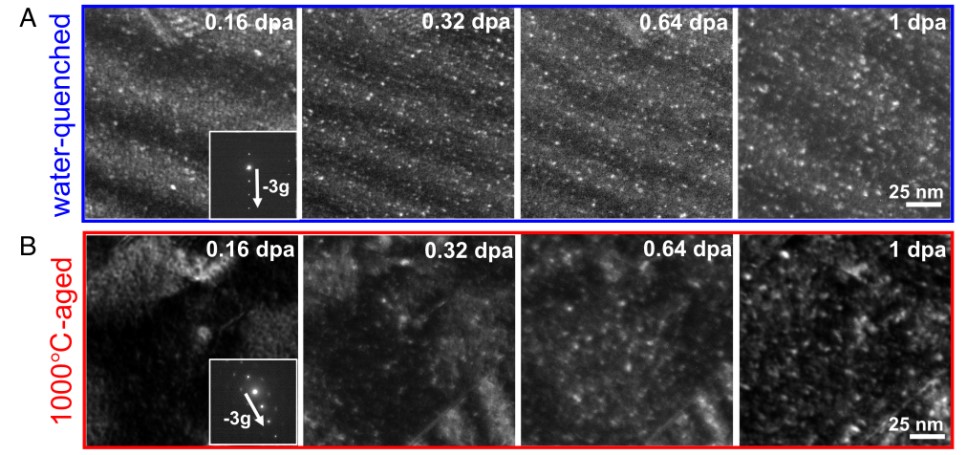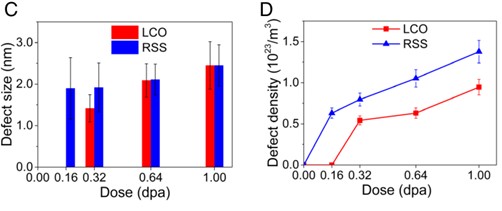High (and medium) entropy alloys have emerged as potentially suitable structural materials for nuclear applications, particularly as they appear to show promising irradiation resistance. Recent studies have provided evidence of the presence of local chemical order (LCO) as a salient feature of these complex concentrated solid-solution alloys. However, the influence of such LCO on their irradiation response has remained uncertain thus far.
To address the question mentioned above, researchers from the Center for Alloy Innovation and Design (CAID), State Key Laboratory for Mechanical Behavior of Materials, and the School of Nuclear Science and Technology, have combined in situ He+ irradiation experiments with atomistic simulations of primary damage to uncover the influence of LCO on the response of the equiatomic CrCoNi MEA to ion irradiation. This alloy is a representative of the fcc multi-principal element systems with mechanical properties that are mechanistically typical of other single-phase, solid-solution HEAs.
It is found that LCO slows down the formation and evolution of point defects in the equiatomic medium-entropy alloy CrCoNi during irradiation (see Figs. 1 and 2). In particular, the irradiation-induced vacancies and interstitials exhibit a smaller difference in their mobility, arising from a stronger effect of LCO in localizing interstitial diffusion (see Fig. 3). This effect promotes their recombination as the LCO serves to tune the migration energy barriers of these point defects, thereby delaying the initiation of damage. These findings imply that local chemical ordering may provide a new variable in the design space to enhance the resistance of multiple principal element alloys to irradiation damage.


Figure 1. TEM images of (A) water-quenched (RSS), and (B) 1000℃-aged (LCO) CrCoNi alloys following various irradiation doses. (C) Average size (in diameter) and (D) number density of defect clusters for the RSS and LCO CrCoNi.

Figure 2. Comparison of the defect clusters resulted from cascade simulations with 40 keV PKA energy. (A) Defect morphology. (B) Accumulative probability of defect clusters. (C) Distribution of defect clusters of different sizes. (D) Number of point defects in clusters of four different size ranges. (E) Average lengths of the dislocation lines of various types.

Figure 3. Diffusion of point defects in pure Ni and in the RSS and LCO CrCoNi samples. (A) Mean square displacement for vacancies and interstitials at 1200 K. (B) The tracer diffusion coefficient (D) for vacancies and interstitials at various temperatures. (C) The difference between the interstitial diffusion coefficient (Dint) and vacancy diffusion coefficient (Dvac) at various temperatures.
These results are recently published in The Proceedings of the National Academy of Sciences (PNAS) entitled “Effect of local chemical order on the irradiation-induced defect evolution in CrCoNi medium-entropy alloy”. The co-corresponding authors are Profs. Jun Ding, Chengyang Lu, and Evan Ma all from Xi’an Jiaotong University. This work is supported by the National Natural Science Foundation of China, National Key Research and Development Program of China, National Youth Talents Program and the HPC platform of Xi’an Jiaotong University, the Instrument Analysis Center of Xi’an Jiaotong University and the Xiamen Multiple Ion Beam In-situ TEM Analysis Facility.
Link to the paper: https://www.pnas.org/doi/10.1073/pnas.2218673120


